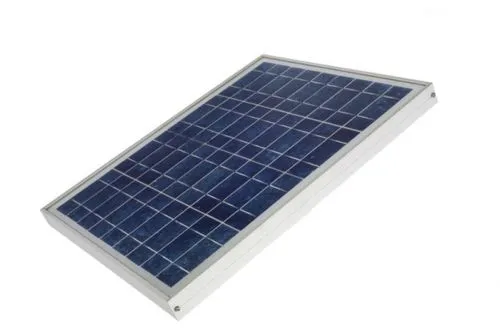Advancing Materials in Solar Photovoltaics
Since Charles Fritts built the first solar panel in 1881, photovoltaic technologies have undergone tremendous innovation. Today's solar panels span three generations, each utilizing different materials and designs with unique advantages and limitations. First generation solar relies on crystalline silicon wafers, offering stability but high costs. Thin film technologies like CIGS and CdTe emerged in the 1970s as lower cost second generation options, though with lower efficiency initially. Now third generation multi-junction and novel organic PV aim for both high performance and cost-effectiveness. As solar research persists, continued evolution of materials and architectures drives strides in efficiency, flexibility and affordability.

The Emergence of First Generation Crystalline Silicon Solar Cells
The first generation of solar photovoltaics relies on crystalline silicon semiconductors. Developed initially in the 1950s, traditional silicon solar cells remain the predominant design today given their high efficiency and stability. However, their fabrication requires energy-intensive processes and substantial silicon material. Consequently, crystalline silicon panels are reliable performers but suffer from high costs. This spurred the development of alternative thin film technologies.
Monocrystalline Silicon Solar Panels
Monocrystalline silicon, formed from a single continuous crystal lattice, pioneered solar cell materials as the first and most efficient design. With tightly ordered molecular structure, monocrystalline silicon reaches impressive 24% efficiency. However, the complex production process requires high purity crystals, driving up costs. Consequently, monocrystalline silicon cells deliver top performance despite high prices and rigidity constraints.
Monocrystalline silicon solar cells carry unique advantages and limitations. Their highly ordered crystal structure enables impressive 24% efficiency ratings, allowing smaller installations than other technologies. Additionally, tight silicon bonds promote longevity, with lifespan potential over 25 years. However, complex production with ultra-pure crystals makes monocrystalline the most expensive option. Also, performance declines more than polycrystalline cells in high heat. While monocrystalline panels excel at space efficiency, their cost and heat sensitivity require weighing tradeoffs for appropriate applications.
Polycrystalline Solar Panel
Polycrystalline silicon solar cells utilize multiple silicon crystal fragments melted together, unlike the continuous lattice in monocrystalline PV. The crystalline boundaries in polycrystalline panels restrict electron flow, reducing efficiency to only 13-16%. However, their simpler manufacturing process skips costly ultra-pure silicon production, slashing prices significantly. So while polycrystalline lacks the peak performance of monocrystalline, its affordability makes it the prevalent residential solar technology today. For cost-conscious households, polycrystalline silicon delivers sufficient efficiency at accessible prices.
Compared to pricy monocrystalline silicon, polycrystalline solar panels offer significant cost savings, making residential solar more affordable. Though polycrystalline efficiency reaches only 80% of monocrystalline levels, it matches the 25-year lifespan. So for homeowners prioritizing value, polycrystalline silicon delivers substantial solar energy at reduced prices despite marginally lower performance.
The Advent of Second Generation Thin Film Solar Cells
Unlike bulky first generation panels, second generation thin film solar cells utilize ultra-thin light-absorbing semiconductor layers, making them lightweight and flexible. With innovative materials and streamlined manufacturing, thin film photovoltaics aimed to undercut the high costs of traditional crystalline silicon cells. Major thin film technologies include amorphous silicon, CIGS, and cadmium telluride.
Morphous Silicon Solar Panels
As the first thin film technology, amorphous silicon cells pioneered the low-cost solar revolution in the 1970s. Using non-crystalline silicon deposited onto substrates, amorphous silicon minimizes material costs and enables flexible panel designs ideal for small electronics. Additional benefits include high heat resistance and versatile applications. However, the disordered atomic structure of amorphous silicon hinders efficiency, which peaks around only 8-10%, lower than crystalline alternatives. Also, amorphous silicon degrades faster, limiting lifespan. While affordable, amorphous silicon tradeoffs reduced efficiency and stability for flexibility and low production costs.
Cadmium Telluride
As a leading thin film material, cadmium telluride (CdTe) solar cells have rapidly gained commercial success since the mid-1990s. Made from the abundant elements cadmium and tellurium, CdTe thin films cost little to produce. Additionally, CdTe absorbs light strongly at lower wavelengths than silicon, generating electricity from more of the solar spectrum. However, CdTe lab cell efficiency peaks around 22% currently, lower than silicon panels. More critically, toxicity issues from cadmium exposure during manufacturing and disposal present environmental hazards. While financially feasible and efficient for solar absorption, CdTe must overcome challenges in performance and safety.
CIGS Solar Panels
By optimizing the semiconductor compound copper indium gallium selenide (CIGS), researchers pushed thin film solar efficiency to new heights. First fabricated at the National Renewable Energy Lab in 1995, CIGS cells achieved swift gains, reaching 20% efficiency by 2010. Additional merits include flexibility and heat resistance. However, complex CIGS manufacturing currently sustains high production costs. Also, despite leading thin films, CIGS efficiency remains below silicon cells. Still, as a top performer with potential for improvement, CIGS paves the path for cost-effective, high-efficiency thin film photovoltaics.
Third Generation Solar Panels
Emerging third generation photovoltaics aim to overcome limitations of traditional solar panels through creative designs and materials. Ranging from multi-junction cells to organic PV, these technologies harness nanotubes, conductive polymers, and other novel components with potential to achieve high efficiency at low costs. As research continues, third generation solar promises more powerful, affordable, and versatile solar energy harvesting.
Conclusion
Selecting solar panel materials involves navigating complex tradeoffs between efficiency, costs, and longevity. Crystalline silicon provides stability and performance but requires expensive production. Alternatively, thin films like CdTe and CIGS reduce costs although sacrifice some efficiency. Careful weighing of priorities helps determine the optimal photovoltaic technology.
